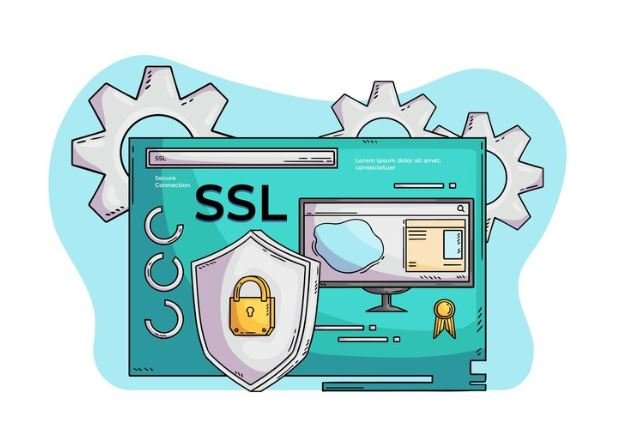It is a widely used programming language for statistical analysis, data visualization, and machine learning R. It has a clear syntax and powerful tools to work with data so it is a preferred programming language for data scientists and analysts.
One of those operators is the $ operator. If you have seen it used in R, you may be curious about what it does, and how it works. This guide will explain what $ means in R, how to use it, and why it matters when you’re working with your data.
What Is the $ Operator in R?
The $ operator in R is used to extract elements from a data frame or a list. And it lets you access specific components, or columns, by name. Imagine it as a way to peek into a bigger thing, such as a list, or table, and select exactly what you need.
For example:
my_list <- list(name = "Alice", age = 25)
print(my_list$name) # Output: "Alice"In this code:
- my_list is a list with 2 elements; name and age.
- my_list $name uses $ to access the value of the name, which is “Alice”.
- We would also delete the key part of transparent data when we see that $ the operator is easy and intuitive.
Where Is $ Commonly Used?
When we deal with two classes of objects in R, we often use the $ operator.
- Lists: A list is a collection of objects that can contain various types of data, such as numbers, text, or even other lists.
- Data Frames − A data frame is a table or a two-dimensional array that has all the columns as vectors and each row corresponding to an observation.
- The $ operator allows you to quickly access specific elements of these objects.

Using $ with Lists
The list in R is a way to store multiple elements, each one can be named. You can leverage $ to get elements by their names.
Example:
# Create a list
person <- list(name = "John", age = 30, hobbies = c("reading", "cycling"))
# Extract elements using $
print(person$name) # Output: "John"
print(person$age) # Output: 30
print(person$hobbies) # Output: "reading" "cycling"Here:
- person $ name retrieves “John”.
- person $ age retrieves 30.
- person $ hobbies return c(“reading”, “cycling”).
If you access a_non_exist_ELEMENT, R will return NULL:
print(person$address) # Output: NULUsing $ with Data Frames
In R, one of the most common data types is a data frame, where you have a name for each column, and you can access spa specific column (or object) by its name using $
Example:
# Create a data frame
students <- data.frame(
name = c("Alice", "Bob", "Charlie"),
age = c(20, 22, 23),
grade = c("A", "B", "A")
)
# Access columns using $
print(students$name) # Output: "Alice" "Bob" "Charlie"
print(students$age) # Output: 20 22 23
print(students$grade) # Output: "A" "B" "A"In this example:
- The name column students $ name returns as a vector.
- students $ age gets the age column.
- $ grade — This gets the grade column from students.
When dealing with large datasets the $ operator is very convenient because it allows for quick access to specific columns.
Comparing $ with Other Access Methods
5 The $ operator can be used to access elements in lists or data frames. Here’s what makes it different from other methods:
Using Square Brackets
You use [] to access elements by position or name.
Example with lists:
print(person[["name"]]) # Output: "John"Example with data frames:
print(students[["name"]]) # Output: "Alice" "Bob" "Charlie"Using Column Indices in Data Frames
You can also use columns to access data in colu frames.
Example:
print(students[, 1]) # Output: "Alice" "Bob" "Charlie"Though these methods will work, the $ operator is easier and more natural to use when we know the name of the element or column we want to access.
Best Practices for Using $
Here are some tips to help you get the most out of the $ operator:
- Use meaningful list elements and data frame column names. It allows them to be accessed more easily with $.
- This rules out spaces or special characters in the name but they are less easily handled than others.
- Use $ when you know the name of the element or column you are looking for. For more dynamic tasks, consider [[, etc.
Common Errors and Avoidance Techniques
Below are some common mistakes when using $ and tips on how to avoid them:
1) Misspelling Names – If you misspell a name, R will not throw an error but will return NULL.
print(person $nme) # Output: NULLAlways check the names of elements or columns.
2. Returning NULL for Non-Existent Elements If the element does not exist, $ returns NULL. Pop the desired element from the appropriate level and checkStack is not empty.
3. Lists Vs Data Frames: Remember That $ Works on Lists and Data Frames But the Output of the Two Types of Data Is Different. Lists can contain various data types, while data frames usually store column vectors.

Advanced Use Cases
The $ operator can also be used in more complex situations, for example:
Chaining: Getting nested elements.
nested_list <- list(info = list(name = "Daisy", age = 28))
print(nested_list$info$name) # Output: "Daisy"Why $ Is Important in R
$ Operator to Work with Complex Data Structures Regardless of whether you are analyzing data, building models, or creating visualizations, $ enables you to do so with the most relevant parts of your data. Its easy-to-use syntax is widely used for data scraping in R.
Conclusion
The $ operator allows you to quickly extract the value associated with a given key in a list, or a column by name from a data frame or matrix. It is easily used, highly readable, and great for data manipulation in a short time.
Knowing how to use $ and when to do so allows you to speed up your workflow and manipulate data more efficiently. The basic solution for this is the $ operator, whether you are cutting out a single column from a data frame or accessing a nested list.
With this knowledge in hand, you will be able to write cleaner and more efficient R code, thus making your data analysis tasks easier and more enjoyable.


